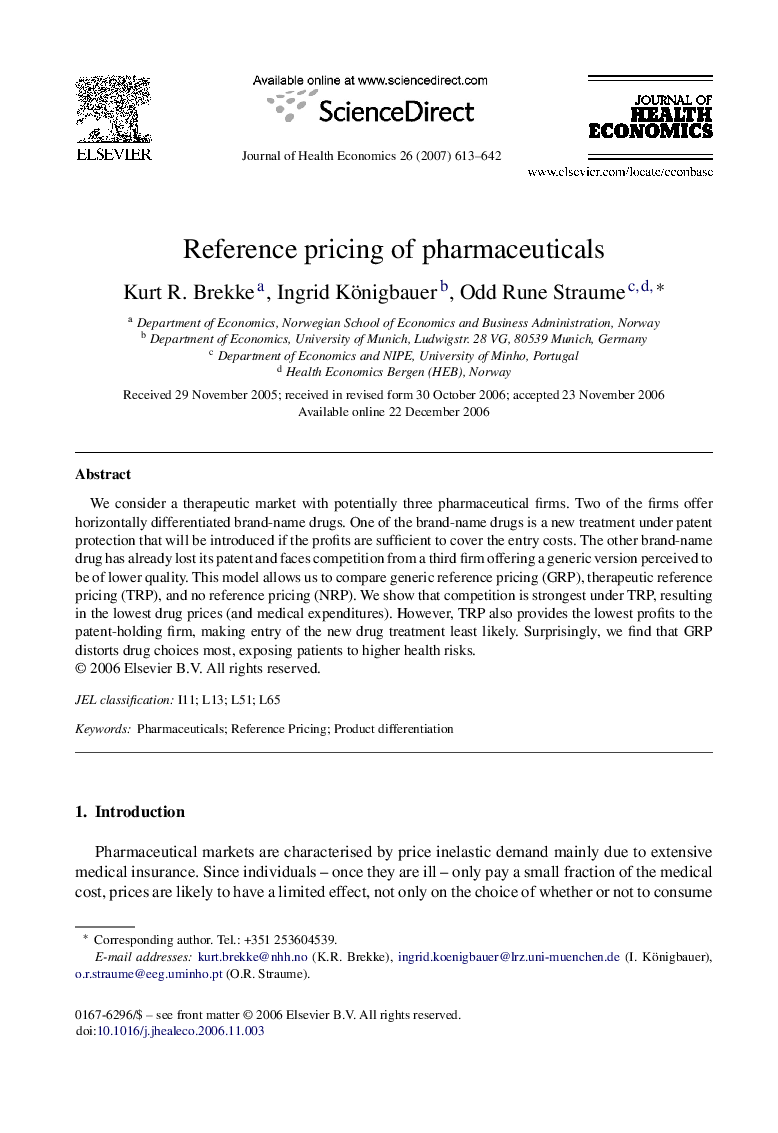| Article ID | Journal | Published Year | Pages | File Type |
|---|---|---|---|---|
| 962191 | Journal of Health Economics | 2007 | 30 Pages |
Abstract
We consider a therapeutic market with potentially three pharmaceutical firms. Two of the firms offer horizontally differentiated brand-name drugs. One of the brand-name drugs is a new treatment under patent protection that will be introduced if the profits are sufficient to cover the entry costs. The other brand-name drug has already lost its patent and faces competition from a third firm offering a generic version perceived to be of lower quality. This model allows us to compare generic reference pricing (GRP), therapeutic reference pricing (TRP), and no reference pricing (NRP). We show that competition is strongest under TRP, resulting in the lowest drug prices (and medical expenditures). However, TRP also provides the lowest profits to the patent-holding firm, making entry of the new drug treatment least likely. Surprisingly, we find that GRP distorts drug choices most, exposing patients to higher health risks.
Related Topics
Health Sciences
Medicine and Dentistry
Public Health and Health Policy
Authors
Kurt R. Brekke, Ingrid Königbauer, Odd Rune Straume,
